Palatine Joseph, ie Erzherzog Joseph Anton Johann Baptist von Österreich died on 13 January 1847 in Buda. The archduke, who became a Hungarian palatine because his brother, Archduke Alexander Leopold [Sándor Lipót in Hungarian], the former palatine, died in a chemical accident, served the highest dignity of the Kingdom of Hungary after the king for more than fifty years.
Although the expectation of the young Joseph was to calm down Hungarians, who were a little upset by the Martinovics uprising, and return them to the "imperial pen", instead he became a representative and advocate of Hungarian interests in the court. In addition, he passionately developed, beautified and supported Pest and Buda.
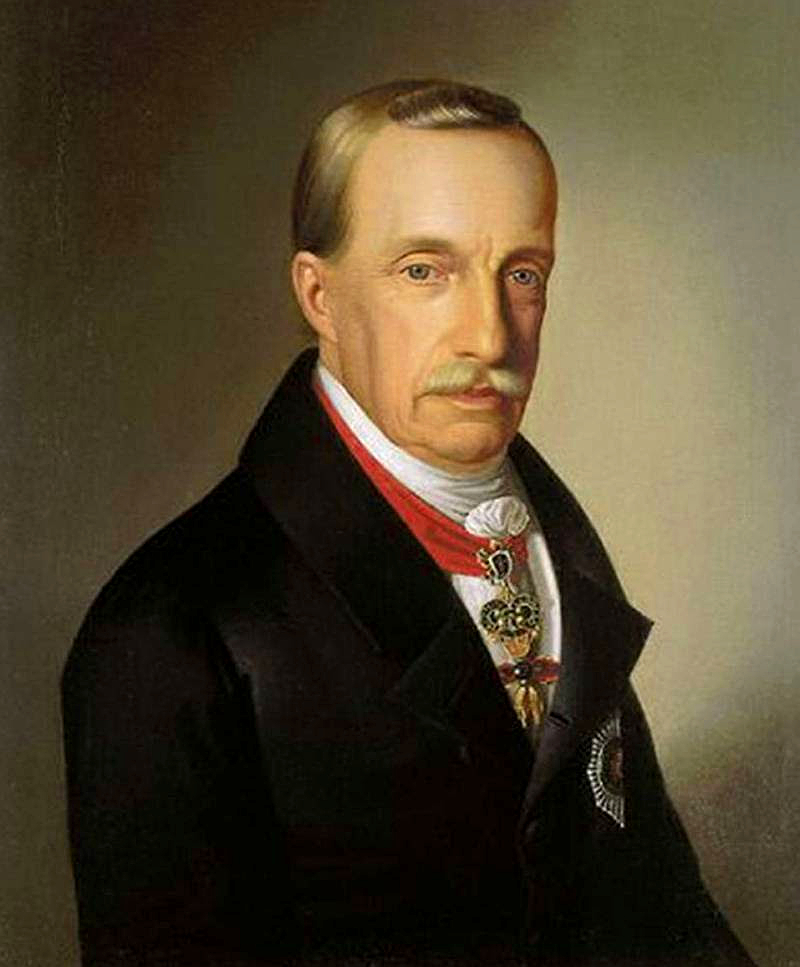
Perhaps the best known picture of the palatine is the portrait by Miklós Barabás
The palatine specifically supported Ferenc Széchényi when the lord decided to donate his vast library and other collection to the nation. From the gigantic collection - the first handed over material containing almost 30,000 items weighed 11 tons - the National Museum was organized on the proposal of Palatine Joseph, and he also expanded the material with donations.
He also supported scientific activities in other ways, he was one of the promoters and initiators of the construction of the Gellért Hill Observatory, the significance of which is shown by the fact that its opening in 1815 was visited by the Russian Tsar Alexander I, the Prussian King Frederick William III and of course Francis I King of Hungary and Emperor of Austria, who were at the time having a conference in Vienna after the Napoleonic Wars.
He also immediately supported the establishment of the Hungarian Academy of Sciences, not only lobbied in Vienna for the license, but also supported the institution with 10,000 forints.
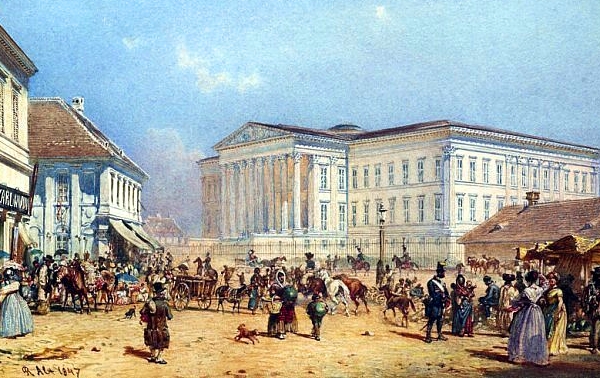
The Hungarian National Museum was organized on his proposal from the donation of Ferenc Széchényi (The building of the National Museum on an engraving by Rudolf Alt in the 1840s)
He experienced at an early age the importance of the constant connection between Pest and Buda, as half of Pest was "stuck with the Palatine" when the Pest nobility participating in the Buda Ball could not go home because the pontoon bridge was closed due to ice.
Of course, not only because of this, he was an enthusiastic supporter of István Széchenyi in the construction of the bridge. This was also necessary because the Viennese court and the leadership of the army did not really support a permanent bridge for political, military and prestige reasons, and some of the Hungarian nobility were reluctant to relinquish their privileges. The palatine thus helped the cause of the bridge in both Vienna and the Parliament. No matter how big an organizing genius Széchenyi was, the Chain Bridge might not have been possible without the Palatine's support.
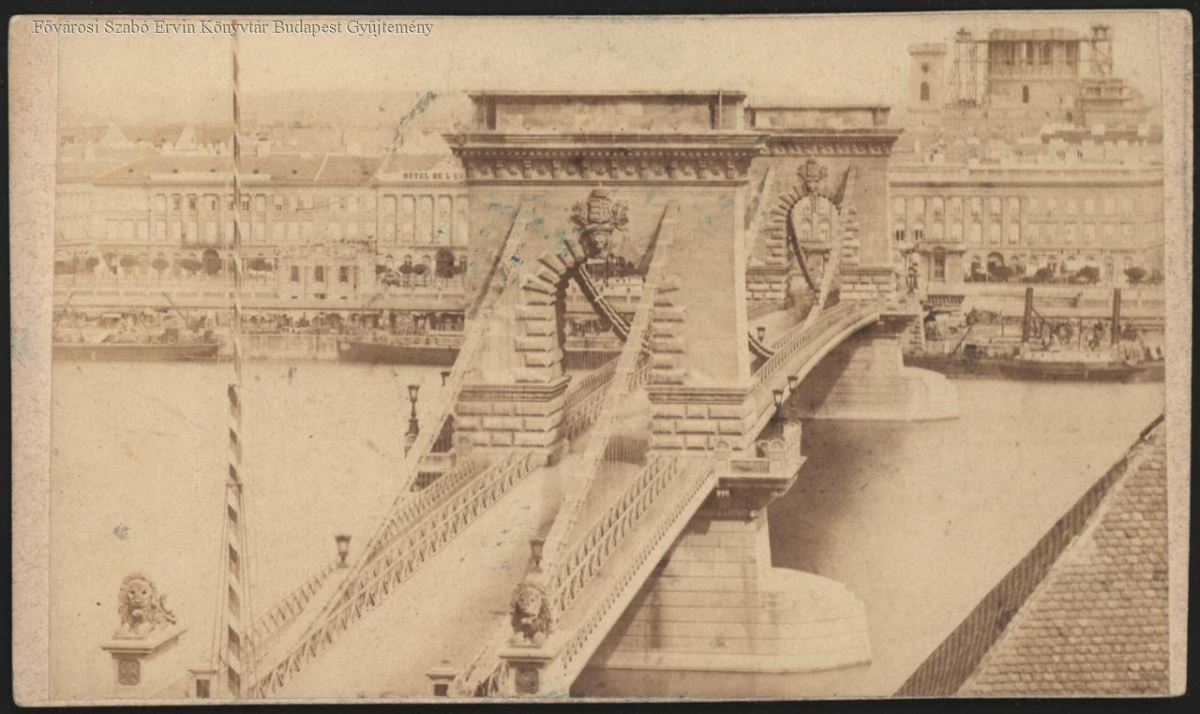
The Chain Bridge could not have been created without the Palatine Joseph (Photo: FSZEK Budapest Collection. One of the earliest recordings of the bridge)
Although Palatine Joseph was born an archduke, which determined him to be a “full-time” politician, his real passion was gardening and architecture. He paid a lot of attention to the development and beautification of Pest, it is no coincidence that already in 1801 he declared that Pest should be developed systematically, and by 1804 he had prepared ready-made plans with János Hild. A few years later, in 1808, the Pest Beautification Committee was established on his initiative. All this decades before the actions of István Széchenyi.
By the way, with Széchenyi - whose big plans, the Hengermalom, which was named after him, sailing on the Danube, and the shipyard he supported - he had a fundamental debate on urban development issues. The count supported smaller and larger green areas within the cities, he would have liked to see rows of trees and smaller parks within the city, while the palatine was more of a supporter of larger parks, he didn't really see why the inner areas of the city needed green. He was a fan of large parks, as his “learned craft” was, in principle, gardening.
Each of his brothers, like himself, had learned a profession at a young age. Archduke John, who, although interested in the natural sciences, was taken into military service by the Habsburg family, was a watchmaker, while Francis, the later emperor, was a lather.
The palatine supported the development and beautification of the Városliget in the same way as its own property, Margaret Island, which he opened to the public in 1816. In both of the two large parks, he planted many of his favourite tree, the sycamore, but the horse-chestnut trees in the Városliget, which were planted after the former poplar trees were cut down into firewood to help the poor in the winter of 1830 to help the poor, came also from him.
Statue in 1883 in the square named after him. His memory was enshrined in law in 1848, and immediately after his death there was a movement for the erection of sculptures, which took place only in 1869 (Photo: Fortepan Budapest Archives. Reference No.: EN.BFL.XV.19.d.1.05.089)
The palatine did not only care about the poor, as he founded the Institute of the Blind in Pest in 1826, and he did not leave the people of Pest and Buda at the time of the disasters. He rescued people himself during the fire in Buda in 1810 and was even injured here, and was the organizer of the reconstructions during the flood of 1838. It is no coincidence that the Institutum Geometricum operated under the name József Ipartanoda from 1846, and the Budapest University of Technology bore the name of the palatine until 1949.
He also supported transport developments, such as the fast-failed floating railway in Kőbánya, which opened in 1827 and was destroyed in 1828, and then the steam railway. He opened the Kőbánya horse-drawn railway in 1827 and the Pest-Vác railway line in 1846, and he and his family were the first passengers.
We can say that the Budapest we know today would not have been possible without Palatine Joseph, who, before István Széchenyi, then Gyula Andrássy and the Public Works Council, had already planned to create a real metropolis from the two small towns. He was successful in his 51 years of operation.
The city remembered the palatine in a worthy way, as many institutions and public spaces bear his name, and his statue stands in the middle of the square named after him. Although socialism tried to reduce his role, fortunately it was not erased from the memory of the nation and Budapest.
Cover photo: Unveiling of the statue of Palatine Joseph (Illustration of Magyarország és a Nagyvilág, 9 May 1869)

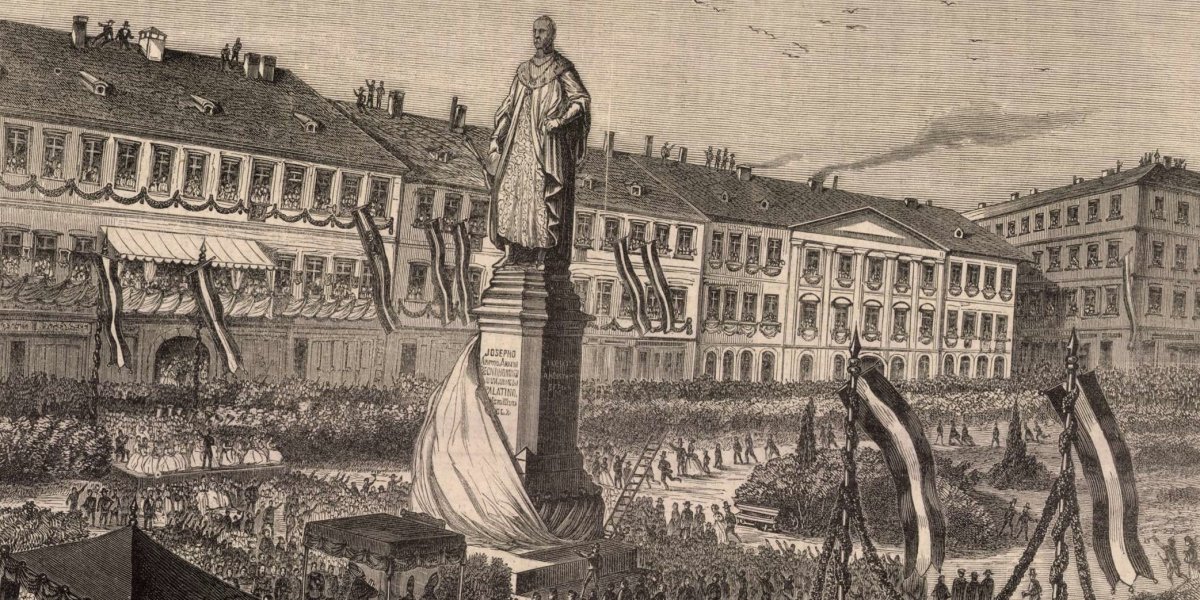
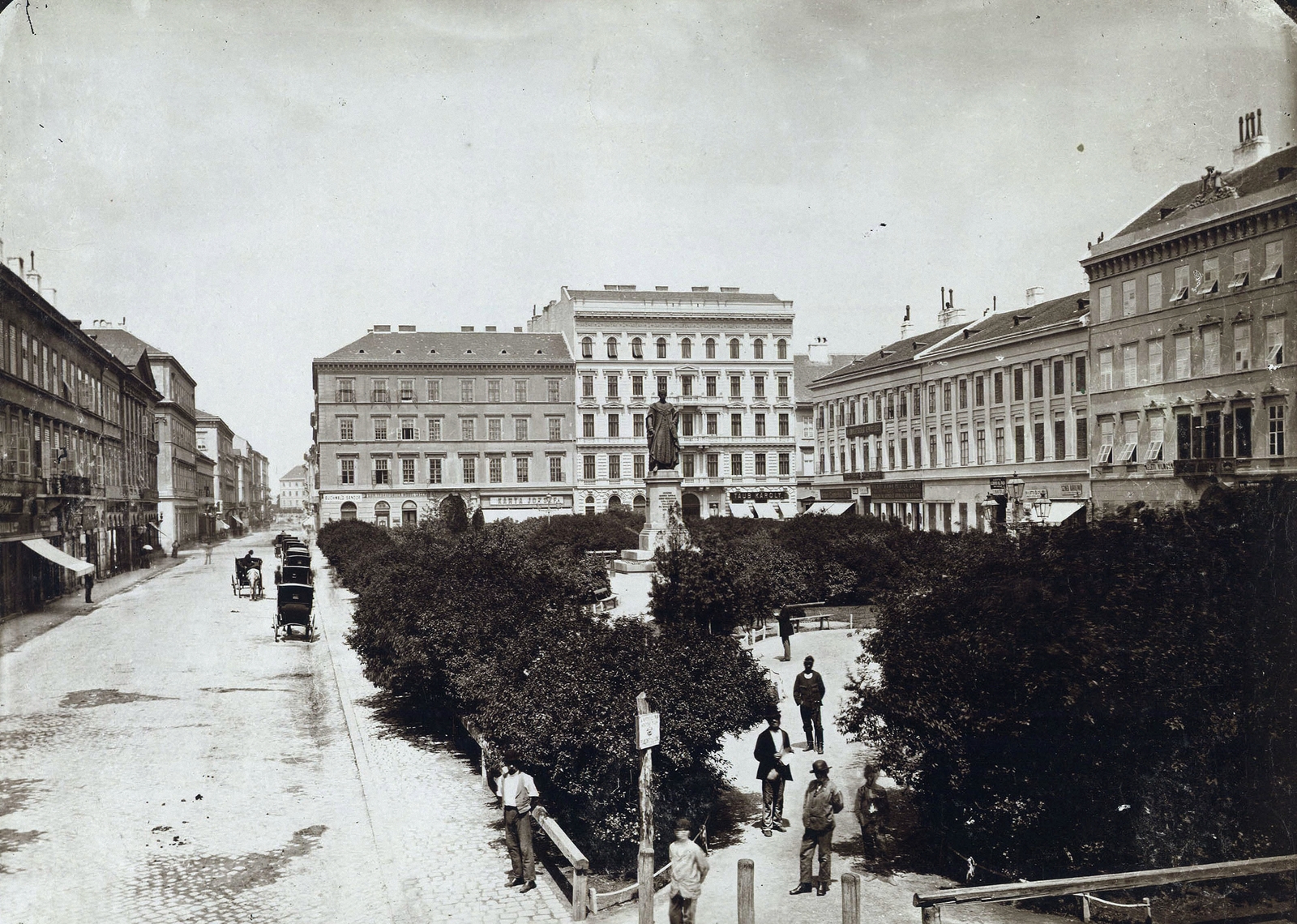


































Hozzászólások
Log in or register to comment!
Login Registration